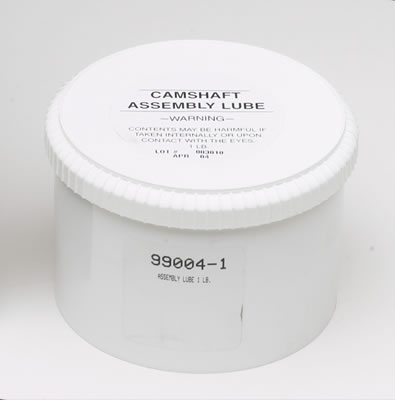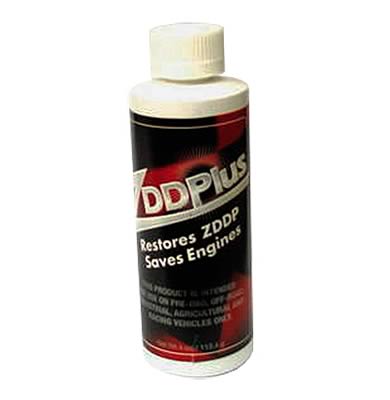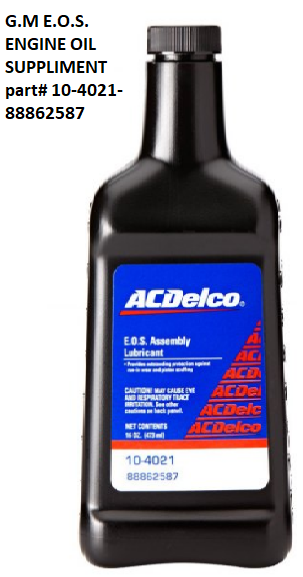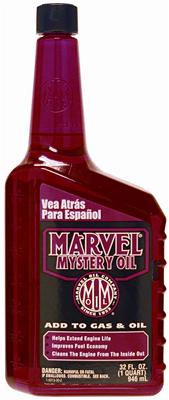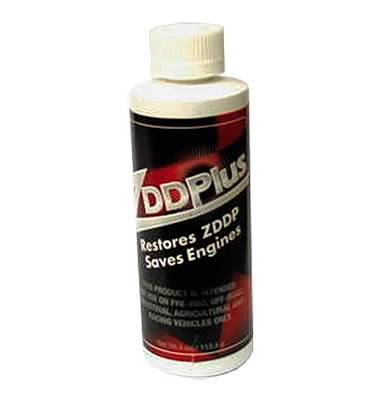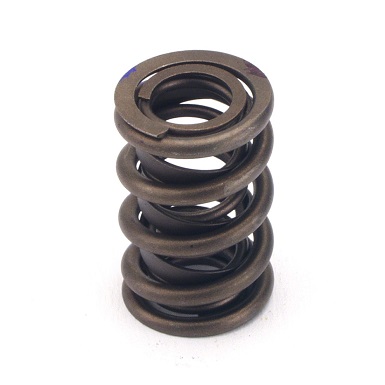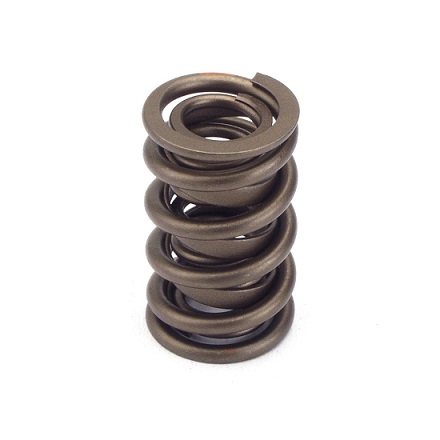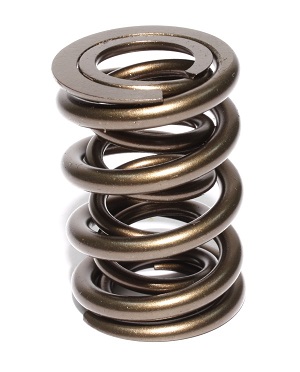ideal valve spring pressure for flat tappet cam break-in, short answer,I prefer a spring that has 110-120 lb seat and less than 280 open pressure , for a flat tappet cam break-in but checking the clearances and using a good quality oil and oil additive is critical to durability, Ive used SHELL , and TEXICO DIESEL rated oils, with crane and crower additives very successfully for decades.
but I also coat both the cam and lifters with a good moly base grease during assembly . and use fresh oil and additives and usually a quart of marvel mystery oil added to the mix
most failures I see are related to failures to verify ALL clearances or lack of lots of free flowing lubricant, not a bit more spring pressure!
pre-spraying all bearing and valve train components with a moly based spray, helps embed micro moly lubricants in the metallic surface micro fissures , a good paste lube like cranes assembly lube over the spray surface helps insure a good lubricant surface coating, that is far stronger than just the ZINC and PHOSPHATES in oil
HERES A FEW OF THE OILS I TRUST, coat flat tappet lifters and cam lobes with crane moly assembly paste lube
I usually use 6-7 quarts of oil and 1 quart of marvel mystery oil added in my oil pan 11 quart oil pan and oil cooler system capacity
10W30 Valvoline VR1 Conventional Racing Oil
10W30 Valvoline NSL
10w30 Castrol GTX conventional,
10w30 mobile 1
10w30 KENDAL racing oil
and heres a good break in additive for flat tappet lifter cams
http://www.summitracing.com/parts/CRO-86092
http://www.acdelco.com/auto-parts/v...engine-oil-supplement-assembly-lubricant.html
READ ALL THE LINKS BELOW IT COULD SAVE YOU A GOOD DEAL OF TIME AND MONEY
http://www.cranecams.com/uploads/instructions/214e_.pdf
http://www.cranecams.com/uploads/breakin/548e.pdf
http://www.rlengines.com/tech/FlatTappe ... lletin.pdf
http://www.hotrod.com/techarticles/engi ... ewall.html
viewtopic.php?f=52&t=181&p=6764&hilit=erson+break+in#p6764
viewtopic.php?f=52&t=1489&p=3360&hilit=erson+break+in#p3360
viewtopic.php?f=44&t=799&p=1161&hilit=erson+break+in#p1161
viewtopic.php?f=50&t=798&p=1160&hilit=erson+break+in#p1160
http://www.pbm-erson.com/uploads/cat%5B ... CEDURE.pdf
viewtopic.php?f=54&t=1334&p=2910#p2910
HERES SEVERAL OILS AND ADDITIVES THAT HELP
http://www.summitracing.com/parts/cro-86092/overview/
http://www.summitracing.com/parts/cca-159/overview/
http://www.summitracing.com/parts/cca-1590/overview/
http://www.summitracing.com/parts/tfs-94000/overview/
http://www.summitracing.com/parts/crn-99003-1/overview/
http://www.summitracing.com/parts/bpo-0 ... /overview/
How to Select A Valve Spring
With the many choices of aftermarket cylinder heads, most with "longer-than-stock" length valves, the recommendation of a specific spring for a specific cam is almost impossible. It is now necessary to select the spring that will best fit the cylinder head configuration. We offer the following as guide lines only:
1) "FLAT-TAPPET" cam/lifter applications (Street & Street/Strip) seat pressures
a. Small Block 105-125# Seat Pressure
b. Big Block 115-130# Seat Pressure (Note: Big Block applications need higher seat pressures due to their larger, heavier valves.)
2) "FLAT-TAPPET" Open pressures should not exceed 330# open pressure (sustained after spring break-in) for acceptable cam and lifter life.
a. Open pressures should be a minimum of 220# for applications up to 4000 RPM.
b. For good performance above 4000, open pressures should be at least 260# with stock weight valves. (Light weight valves require less spring open pressure.)
c. Spring open pressures over 280# can cause "pressed-in" studs to come loose; therefore, we recommend screw-in studs for open pressures above 280#.
3) HYDRAULIC ROLLER CAMS require higher spring seat pressures to control the heavier roller tappets and the more aggressive opening and closing rates available to roller cam profiles.
a. Small Block applications: 120-145# seat pressure
b. Big Block applications: 130-165# seat pressure
4) HYDRAULIC ROLLER CAMS use higher open pressures to control the high vertical opening inertia of the heavier roller followers.
a. Small Block applications need at least 260# for general driving applications up to 4000 RPM.
b. Moderate performance small block applications like 300-360# open.
c. Serious small block applications can tolerate 400-425#* open pressures and still expect
"reasonable" valve train life when top quality springs, pushrods, and lubricants are used.
d. Big Block applications need at least 280# for general driving applications up to 4000 RPM.
e. Moderate performance big block applications like 325-375# open pressure.
f. Serious big block performance applications can tolerate 450#* open pressure and still expect "reasonable" valve train life when top quality springs, pushrods, and lubricants are used.
*Note: Open pressures in excess of 360# require the use of roller tappet bodies made of billet steel. Crane hydraulic roller and solid roller tappets are made from 8620 bearing grade steel to withstand the stresses of high-performance use. Most stock hydraulic roller tappet bodies are made of cast iron and cannot tolerate high spring loads.
5) SOLID LIFTER ROLLER CAM/LIFTER
Applications are generally used for serious street/strip use and full competition. Most are not used in "daily-drivers" where day-to-day reliability is stressed. Instead, most of these cams are intended for "winning performance." These cams are designed with "very aggressive" opening and closing rates. High seat pressures are necessary to keep the valves from bouncing when they come back to the seat. In all cases, the valve action and spring pressures required mandate the use of high-strength, one-piece valves.
a. Seat Pressures are determined by valve/retainer weight, engine RPM and life expectancy of components before replacement is required. Milder roller cams require 165# on the seat as an absolute minimum. 180-200# is common for most modest performance applications. 220-250# is common for most serious sport categories and some circle track professional categories. Pro-stock and Blown Alcohol/Fuel drag applications use as much as 340-370# on the seat. (The racers sometimes change springs as often as every 1/4 mile run!)
b. Open Pressures need to be high enough to control the valve train as the lifter goes over the nose of the cam. Ideally, the minimum amount of open pressure to eliminate or minimize
valve train separation is desired. Any excess open pressure only contributes to pushrod flex,
which can aggravate valve train separation. For serious racing applications this can be deter-
mined only by experimentation and track testing. For general guidelines we offer the following:
i. Street/Strip performance with long cam/lifter life desirable, 350-450# open.
ii. Circle track and moderate bracket racing 450-600@ open.
iii. Serious drag racing and limited distance circle track racing 600# and more.
THERES BILLET AND TOOL STEEL CAM CORES AVAILABLE
http://www.callies.com/wp-content/uploads/2014/06/Cam-Core-Master-Price-Sheet.pdf
Callies Crankshafts Producing 8620 Billet Cam Cores
Recieved notice today, that Callies, is producing billet cam cores for the camshaft industry. This has been in the making for about 1.5 yrs. Since Crane started to have problems, the owner of Callies, took a look at the equipment, but as far as I know only purchased the gear cutting equipment. Crane used to produce the the cams for the aircraft engine mfgs that Callies, makes crankshafts for and when Crane was going down the aircraft engine mfgs notified Callies ,that production of cranks was going to end until a cam mfg was found. So they now mfg and finish cams for aircraft engines and are solving the shortage of cores elsewhere. To me it's good to know that the mfg that makes cranks for aircraft engines also mfg cranks in our market. THEY ARE NOT SUPPLING CAMS ONLY CORES FOR FINISH TO THE CAM GRINDING COMPANYS

